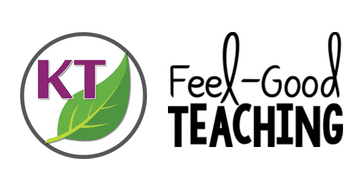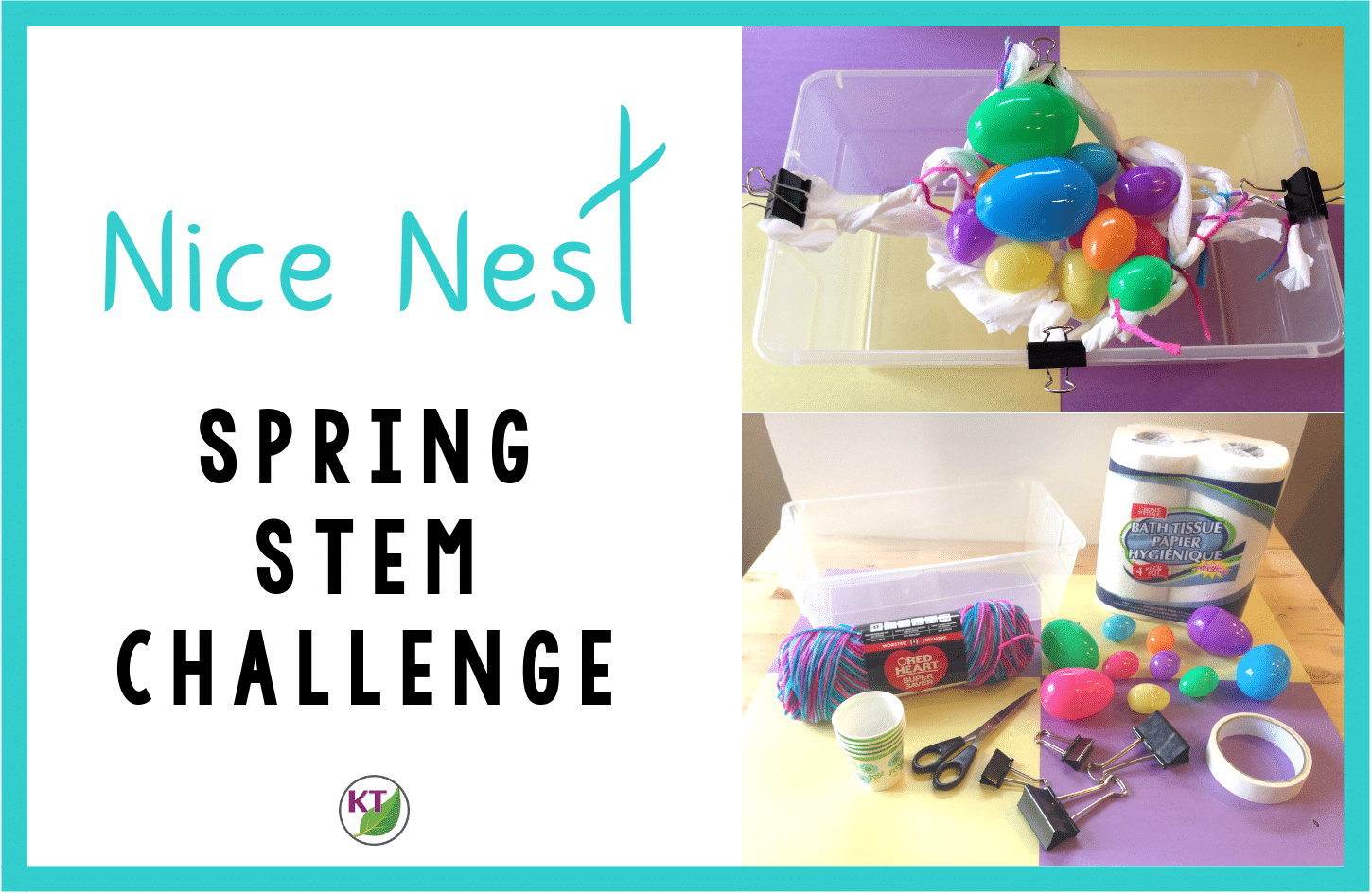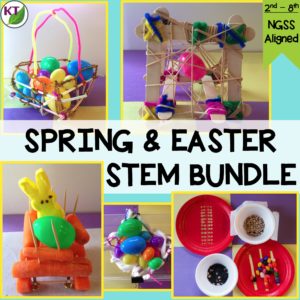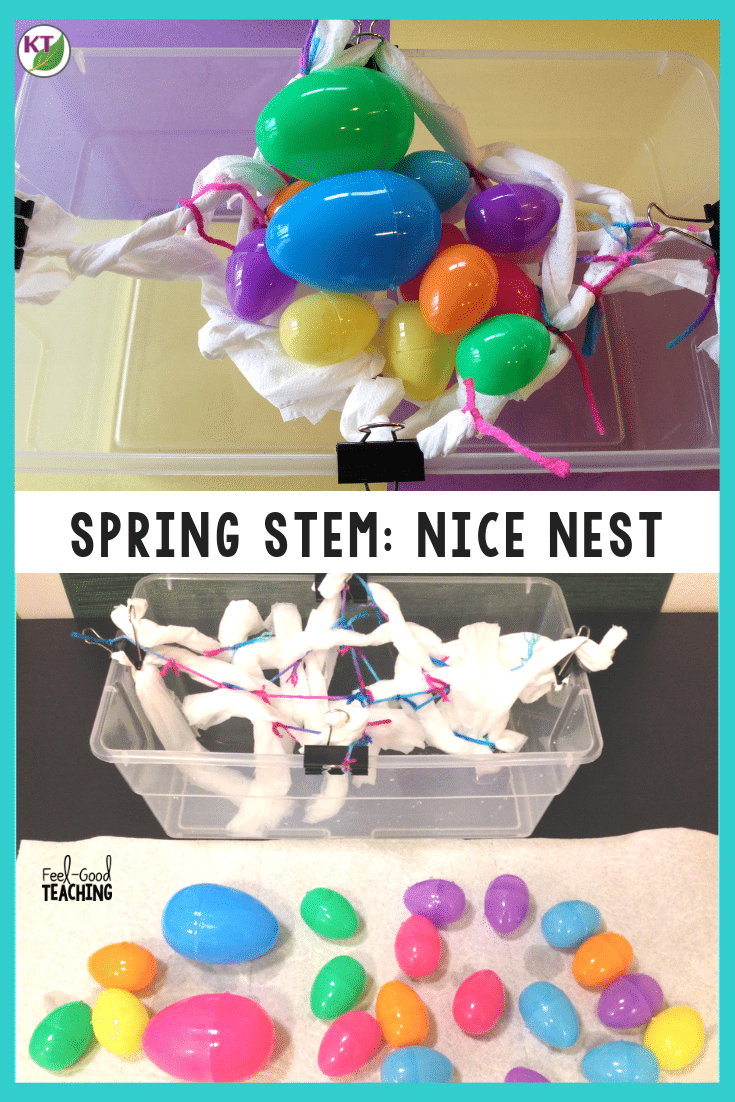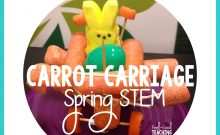Nice Nest is a perfect spring STEM Challenge. Basically, the students create a bird’s nest to hold either a base amount of eggs or for maximum nest capacity. You can use lots of different materials, but the students do get a huge kick out of using predominantly toilet paper!
There are ways to modify the challenge difficulty for grades 2-8, and I’ve covered that and all the other important details of the challenge in this video walk-through:
Recently, I took another look at this resource to find more content connections. Knowing how popular this challenge has become, I wanted to give you more ideas to extend your Nice Nest lessons in science, math, ELA, and even art.
As usual, I find it easier to show you than to tell you, so I’ll be going through some new ideas as well as a book list via live stream and will embed that video below afterwards so you can check it out. I’ve also included some of the links for you below.
Images
Wondering where those vivid images you saw in the video (starting at ~15:30) came from? I found most of them by searching on Pixabay. If you just want to quickly pick up what you I shared to save yourself the search time, just fill out the form below and I’ll send you the link.
Book List
As I mentioned in the video, I am a fan of using picture books even into middle school. They love it and it provides oft-needed scaffolding into the concepts we’re working on. Everything I shared in with you in the video is linked below within the same categories we discussed. I jotted a few notes down for some of the books as well. You can get more details in the video embedded above. (Note: these are affiliate links (disclosure), but I was able to pick up all of these at my local library. Check your local library first and save those dollars!)
Simple Nonfiction Books
An Egg is Quiet & A Nest is Noisy
- Nonfiction, beautiful drawings
- K-3 read-aloud, but any age would enjoy flipping through (I did)
- There are others in the series to extend even further
Pierre the Penguin: A True Story
- Problem-solving
- Persistence when first ideas fail
- Bonus Q/A on last page
- Nonfiction, simple text, great photos
- STEM Ideals/Character Ed.: Responsibility, Patience, Collaboration
What Bluebirds Do & Robins! How They Grow Up
- Simple text, great photos
- Great details
- Use it to generate question list for research/inquiry-based follow-up
- Compare/contrast with bluebirds & robins
About Birds: A Guide for Children
- Very basic overview about birds, incredibly simple sentences.
- Use as a way to generate inquiry list
- Extra info at back of book, including a good bibliography
Sparrow, Eagle, Penguin, and Seagull: What is a bird?
- Read after the book above, listening for answers to any of their questions
- Note what questions remain & new questions came up
- Follow-up with research
Nonfiction Books on Structure/Function/Adaptations
- Structure & function
- Physical adaptations
- Similes
- Author’s Note – use to discuss persistence/determination and the writing process
Songbirds: The Language of Song
- Upper elementary / middle school
- Why birds sing, how scientists analyze songs
- Cowbird eggs in songbirds’ nests: could be used as a lead-in to a debate on immigration (pg. 44)
Crow Smarts: Inside the Brain of the World’s Brightest Bird
- Fascinating, especially section 5
- STEM Ideals: create fair tests, analyze & ask why, use logic & reason, make connections
- Upper elementary / middle school
- Connections to ancient civilizations & mythology (pg. 4-5)
- Anatomical structure & function (pg. 14-23)
- Nests (pg. 24)
Burrows, Nests, & Lairs: Animal Architects
- Bird nests (pg. 20-31)
What if You Had An Animal Nose?
- Facts/photos on animal adaptations on left side of page, drawing of a kid with the adaptation described on the right
- Part of a series on animal adaptations: hair, feet, eyes, teeth, ears
Fiction Connections
- Fun picture book about a chicken who loves to read & wants to become an author
- Includes great narrative writing “rules”
- Deals with rejection & resourcefulness
- An Owl and Rabbit keep outbuilding each other’s home until it gets out of hand and they must work together to solve their problem.
- Create a moral to the story
- For upper elementary or middle school, relate it to something in the real world
- I usually use this in October when we do the Wings Wanted STEM Challenge, but it works here too. You can re-read it in spring pulling out different lessons for ELA and science.
- Re-write Aesop’s Fable with a new pairing. A bird must be in one of the roles and the story must include specific adaptations or perils birds face
- This is a bigger stretch! If you are connecting Easter activities, you can use this book to practice making predictions ~K-2. The book is a repeated format of a baby bunny telling his mom how he’ll run away and hide from her, and the momma bunny explaining how she’ll come after him because he’s her baby. Students could predict the momma bunny’s reply to what the baby says throughout a read-aloud.
Everything is Connected!
Bridge the gap from animal life science into other related science concepts with these books to create a smoother transition. Everything is connected to everything else. 🙂
From Bird Poop to Wind: How Seeds Get Around
- Transition from birds to plants/food chains/ecosystems/symbiotic relationships etc.
- Compare/contrast life cycles of different animal classes
- Create Venn Diagrams
- From here, connect to plant life cycles
- Read after life cycles study
- Good for upper elementary; hits all the important topics
- Part of a series, can transition from here to rock cycle or water cycle
- Positive & negative human impacts on bird populations (Ecology and interrelationships in ecosystems)
Deeper/Denser
Secret Lives of Common Birds: Enjoying Bird Behavior Through the Seasons
- Upper elementary / middle school
- Great photos
- Nests (pg. 25 – 33)
- Warning: some populations may take issue with the descriptions of mating (pg. 19)
Nests, Eggs, and Nestlings of North American Birds
- Field guide, drawings and photos of eggs, nests, and birds.
- Adult level; too dense for most age groups, but images are great for all ages
Just for Fun
- Get the wiggles out for K-2: Have students act out the pages
- Each page has a bird and an action. Ex: “Heron fishes with his bill. Sparrow hops in brown.”
Interested in the resources?
Do you have book or activity recommendations for Nice Nest?
Let us know in the comments!
